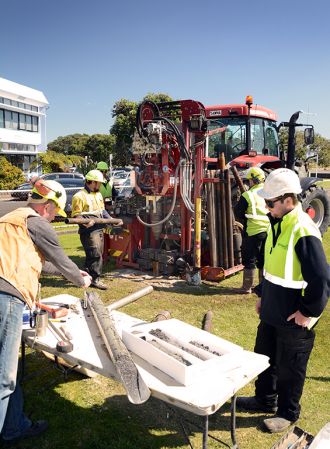 An important geotechnical study of the ground conditions in Whakatāne’s central business district is set to begin next week. The work is part of a Whakatāne District Council initiative which aims to facilitate the strengthening of earthquake-prone buildings in the CBD, and the wider district, in line with future Government requirements.
An important geotechnical study of the ground conditions in Whakatāne’s central business district is set to begin next week. The work is part of a Whakatāne District Council initiative which aims to facilitate the strengthening of earthquake-prone buildings in the CBD, and the wider district, in line with future Government requirements.
Mayor Tony Bonne says the work involved will provide important information for building owners and allow them to make informed decisions about any earthquake strengthening improvements which may be required. “Owners of commercial buildings which have been assessed as earthquake-prone will have 15 years to bring them up to at least 34 percent of the earthquake resistance capability of a new building,” he explains. “Given that the Council is the owner of much of the land in the CBD, we have committed to fund the ground study from Harbour reserves so that we can ensure that building owners and their engineering advisors have the best possible geotechnical information to work with.”
The ground study will involve drilling a minimum of ten 40 mm boreholes in various locations around the CBD and at least 40 cone penetrometer tests. The data provided will be analysed by GNS (the Institute of Geological and Nuclear Science), using software developed in the aftermath of the Christchurch earthquakes to undertake three-dimensional mapping of the ground conditions underlying the CBD. That information will assist the development of detailed seismic assessments of strengthening work which may be required to bring some 92 CBD buildings, which have been assessed as potentially earthquake-prone, up to future earthquake resistance standards.
Drilling operations are expected to begin in a matter of days and will largely be confined to road reserve areas. However, some disruption to businesses and people visiting the CBD area is likely. The work is subject to a resource consent, which requires all surfaces to be restored following the completion of drilling.
The investigation phase is expected to take about six weeks to complete, and the GNS analysis is likely to be completed by April 2015. The information provided will then be made available to all stakeholders via the Council’s website.